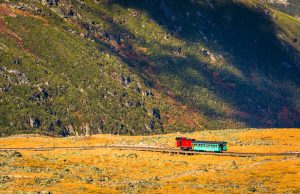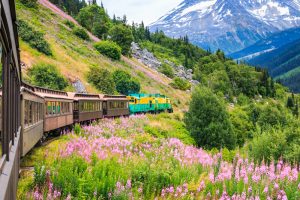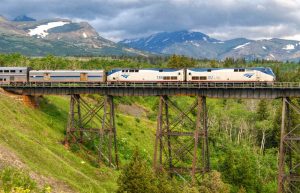Galesburg is known for its Railroad Days festival that is celebrated yearly. It is also the birthplace of Carl Sandburg, a Pulitzer-prize winner, and a poet.
Galesburg, IL
In 1984, Galesburg rebuilds its train station that leads to its very recognizable steep and gabled roof entrance portico. They also added hipped roofs on its flanked wings. The fund to modernize the Galesburg station came from the IL Department of Transportation, Amtrak, and the city of Galesburg.
The Galesburg station stands on land donated by BNSF Railway while the landscape was funded by a local bank. For less than $300,000, the Galesburg station was renovated, keeping some of its facilities such as the original wooden pews from the old Chicago, Burlington & Quincy (CB&Q) Railroad station.
The wooden pews can be seen at the new facility, putting a highlight to the classic wood interior panels, lamps, and fans of the new facility. The exterior of the station is under the care of the city while the interior is being maintained by Amtrak. At a depot ground, the statue of Abraham Lincoln reminds visitors of how much the late President loved the community as shown in his frequent visits before.
The ground expansion
The ground expansion was envisioned in 2011 and in November 2014, the city began making changes. An open house followed a year after.
Legal Architects used the 1400 square feet areas in the south and north porticoes to set-up a Burlington Trailways ticketing office. They also added a waiting area for passengers and spaces for Amtrak personnel and baggage (checked baggage).
Legal Architects also worked on improving the heating and air-conditioning system and restrooms. They also added LED lighting (efficient wall lights) into the new building.
The funding to renovate Galesburg station came from a Section 5311 grant. The grant aims to improve public transportation in rural areas. The station received $690,000 from the said grant.
The station also received funding from the American Recovery and Reinvestment Act of 2009 including a $40,000 grant from the ‘Illinois Jobs Now’ program. This program is a $31 billion statewide capital program that runs for six years with funds coming from 20-year state bonds, local, and federal matching funds.
Knox County
The seat of Galesburg is in Knox County. its settlers started arriving after a year since it was founded in 1825. Galesburg was founded by George W. Gale, a native of Oneida County, New York. He was a Presbyterian minister. His vision was to start a religious school in the Mississippi Valley.
Gale’s scout found the perfect spot in 1835 and they immediately purchased the 36-square mile land. The plan was to make small plots around the supposed to be school, making it the center of the community. As time passed by, the plan reached Illinois.
Gale College
Gale started the Knox Manual Labor College in 1837 in his newfound home. He also created a group of trustees. In 1857, the school was renamed to Knox College. Some theories say that the college was named after the US Revolutionary War Hero and Secretary of War Henry Knox. Another theory says it was named after Calvinist leader John Knox. Only Gale knew the truth perhaps.
The college started operating in 1841, a great moment for the town in terms of financial growth. In 1858, the Old Main building witnessed history through the celebrated Lincoln-Douglas debate.
Three-story Victorian station
Galesburg aspired to be a commercial center and it can be seen in their attempts to successively built three CB&Q stations. The first station caught fire in 1881 and a new one was built in 1884. It was a Victorian structure made of red bricks.
The three-story Victorian station had two wings and a square tower with a pyramidal roof. It is embellished in pale stone. Unfortunately, it also caught fire in April 1911.
In 1912, a new structure was built to replace the Victorian structure. It is bigger with its five arched bays. It is made of Italian bricks and it comes with projecting porticoes. The design aims to show solidity and purpose.
These three structures were all situated as to where the new Galesburg station stands. The Italian brick station was renovated in 1983 and so the new one rose in 184.
Way to Chicago
In 1987, the Atchison, Topeka & Santa Fe (AT&SF) Railroad built a railroad that passes Galesburg on its way to Chicago. This signifies the opening of the community to a larger market of travelers. The new railway followed the Cedar Creek line, one of the lowest elevated rail lines in town. The rail line was completed in 1887 and it was celebrated by the locals.
In 1888, ATSF opened its red sandstone station designed with an octagonal tower. This station was open and working until 1996. Amtrak stopped using the station and moved its services to the new station. The change happened after the successful merge of Burlington Northern (formerly CB&Q) with ATSF. It is now known as BNSF.
ATSF transported products from Galesburg and one of their major products was Purington Pavers – a great-looking and highly durable paving bricks. It is known and used as far as India and Paris. This type of brick is most sought in construction and restoration works even when tile and brick factories are no longer operating in Galesburg,
BNSF opened its rail yards to the public in 1974 and public tours were welcomed. It was known as Railroad Days. A museum next to the station was opened containing employee memorabilia and artifacts. The museum is now home to the notable Pullman club car, the CB&Q Way Car, a CB&Q locomotive #3006, a railway post office car, and different railroad-themed pieces. If you are travelling with your kids, you can then bring them to the nearby Discovery Depot that is open every day, 365 days a year!
During Railroad Days celebrations, events are always happening in the popular rail museum just north of Galesburg station. CB&Q merged with Burlington Northern (BN) in 1970 and 1974, the first open house happened. It was the railroad company’s way of thanking the community for their continued support. During the said open house, memorabilia were brought out by the employees for visitors to see and people had to wait in line for their tours.
The memorabilia and collection at the museum grew as employees and railroad companies started donating. BN donated the Pullman Parlor car in 1981. It is called Meath. CB&Q followed by donating the locomotive engine #3006. In 184, BN again gave their CB&Q Waycar 13501. The museum officially opened to the public on December 7, 2004, in time to celebrate CB&Q’s arrival in Galesburg.
To add fun to Galesburg, the public schools in the city also host their annual duck race. This activity started in September 1996. It is a fund-raising event and all money raised from the said event is given to schools in the district in the form of grants.
Carl Sandburg, a Pulitzer award winner, and a poet was born in Galesburg. His father used to be a railroad worker. A school was named after Sandburg – Carl Sandburg College. Sandburg’s poems are celebrated for being inspirational. He also wrote proses. In 2006, Sandburg’s contribution to the community was again recognized after naming one of the IDOT-supported trains his.
To date, there are eight trains operated by Amtrak that use the Galesburg station. The station has a staff room and a waiting room. The Illinois Department of Transportation They shoulder the cost of the Carl Sandburg and Illinois Zephyr operations.

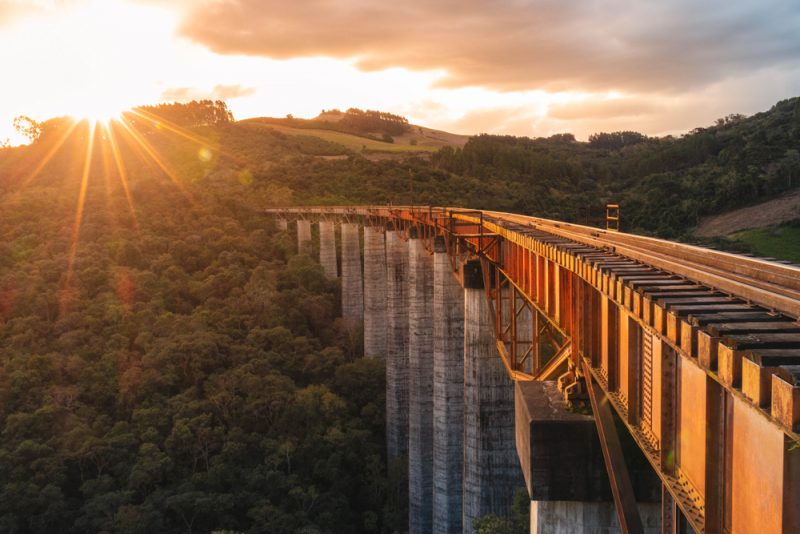
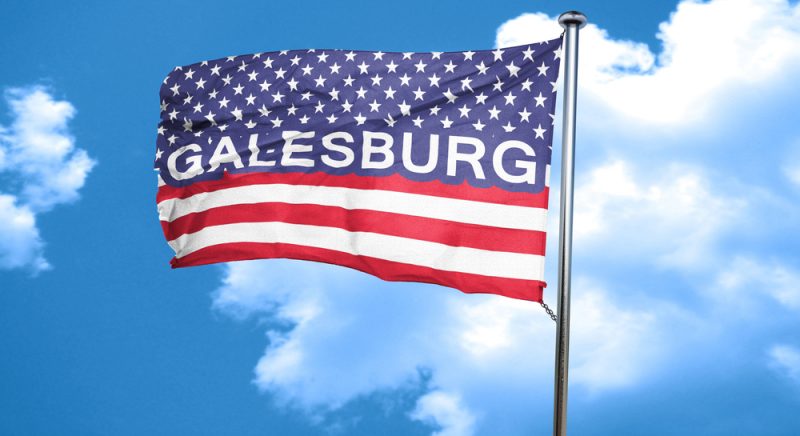
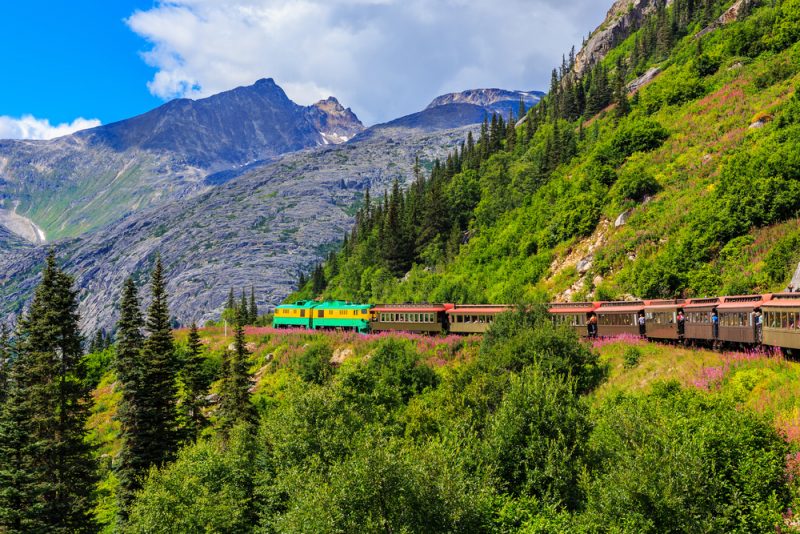
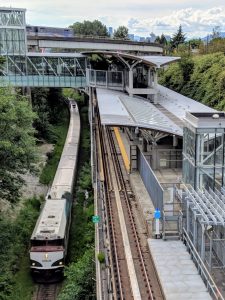
 This train ride is 4 hours long so if you have the entire day to yourself, you can do a roundtrip ride easily. This 65-mile trail can be enjoyed with wester music that the train provides.
This train ride is 4 hours long so if you have the entire day to yourself, you can do a roundtrip ride easily. This 65-mile trail can be enjoyed with wester music that the train provides. 